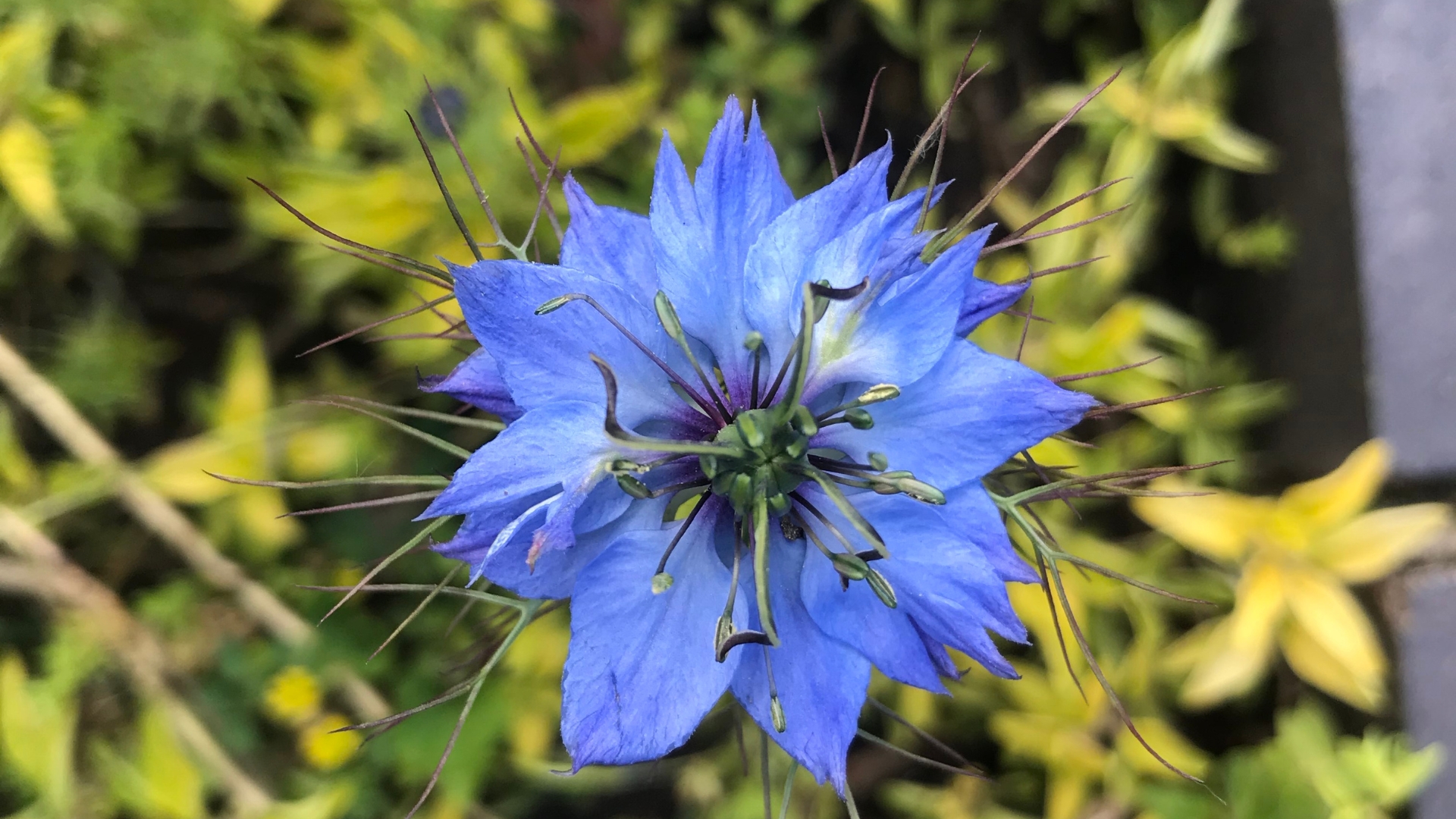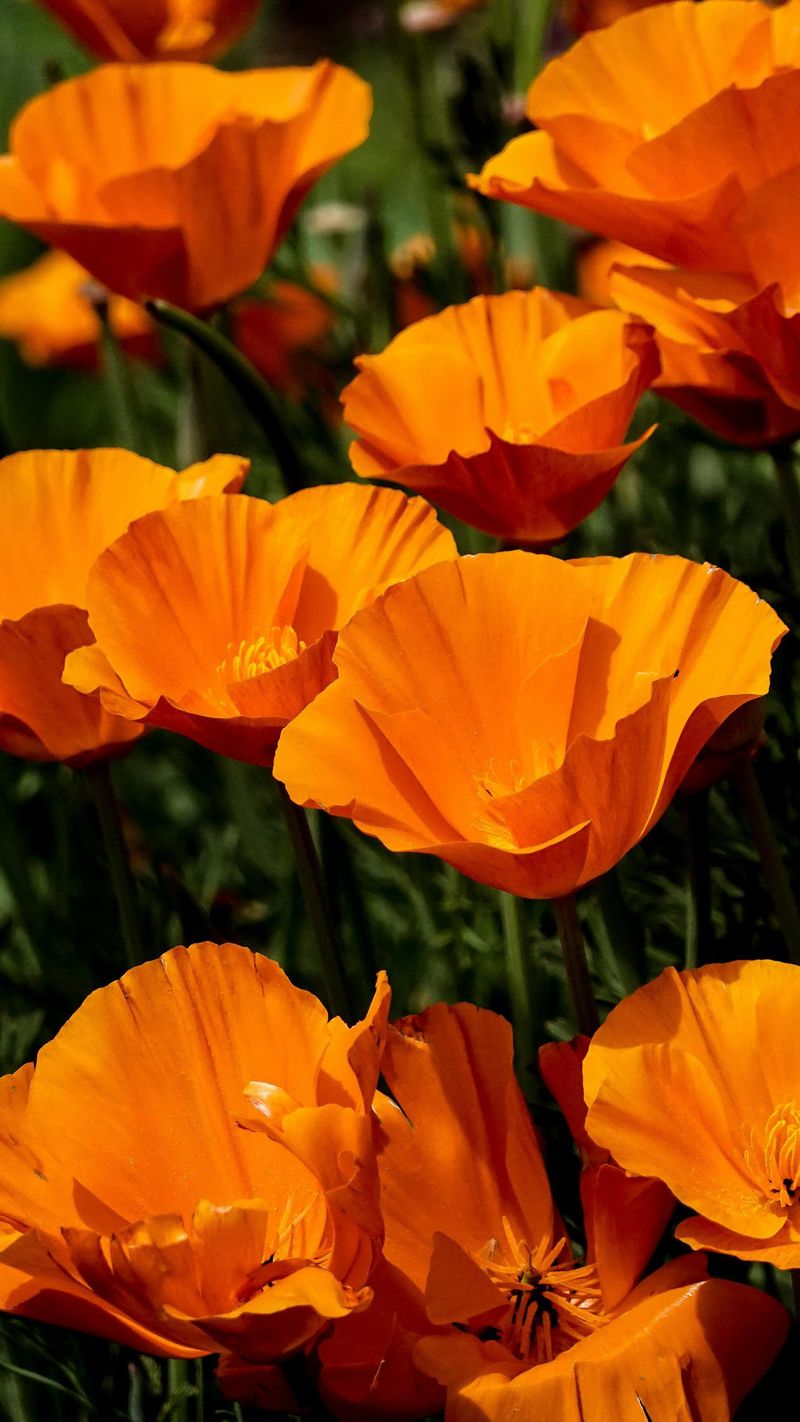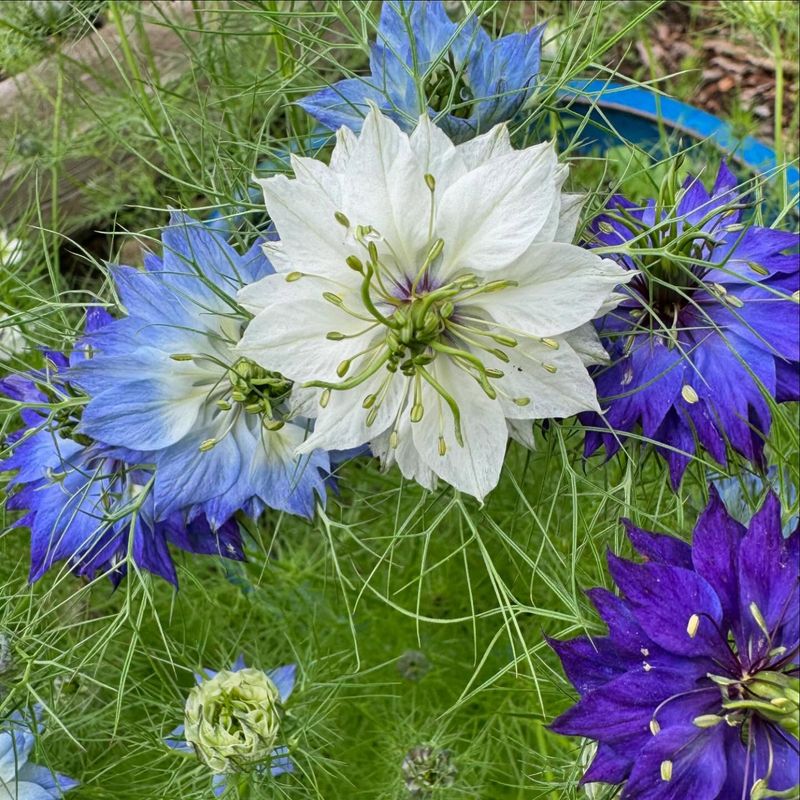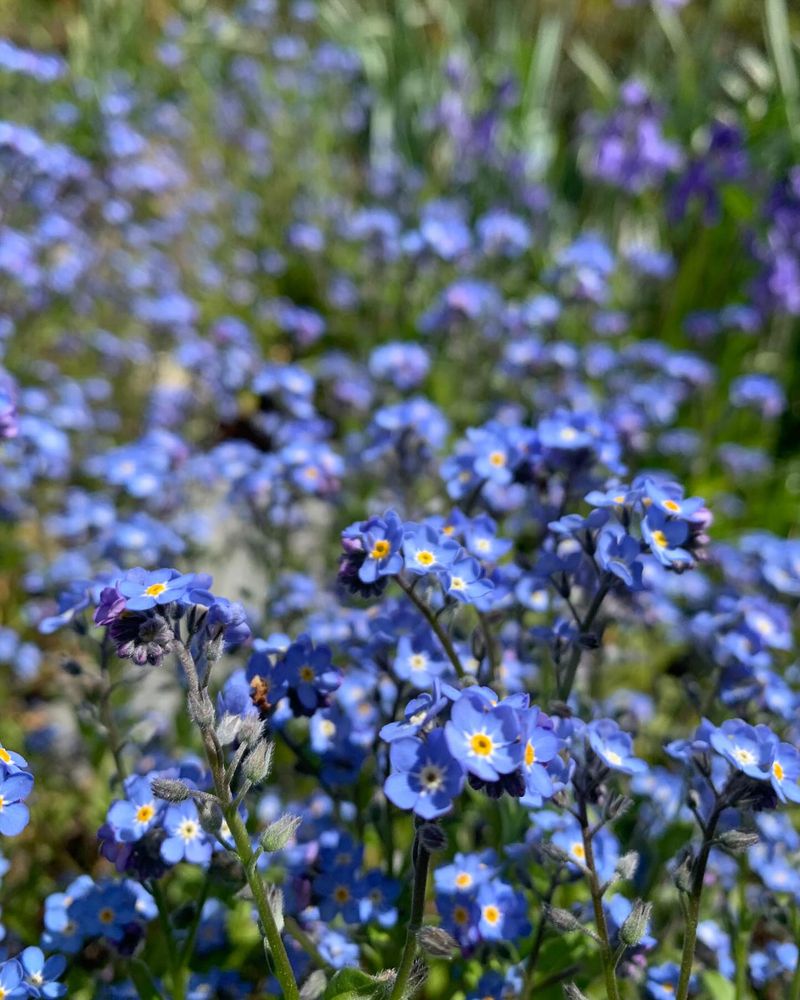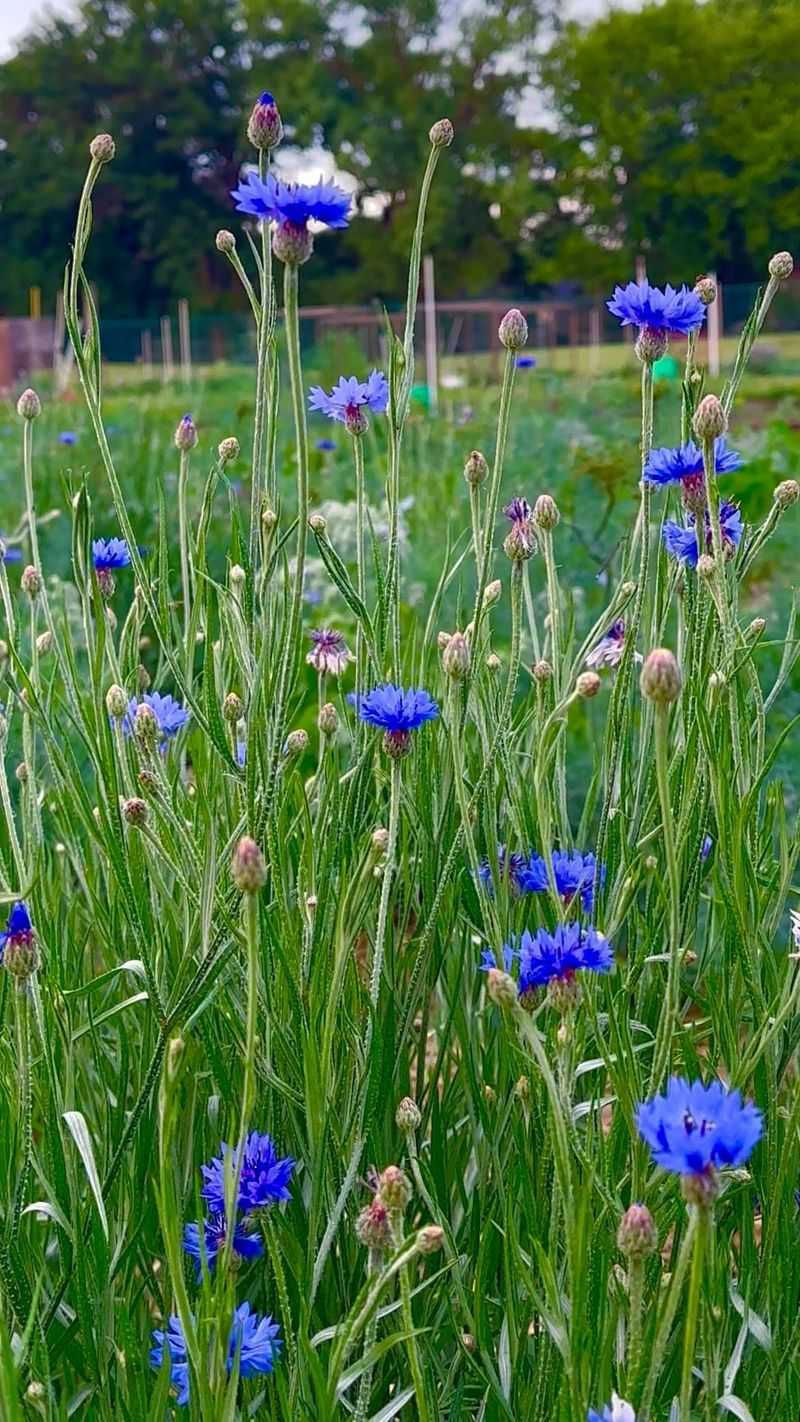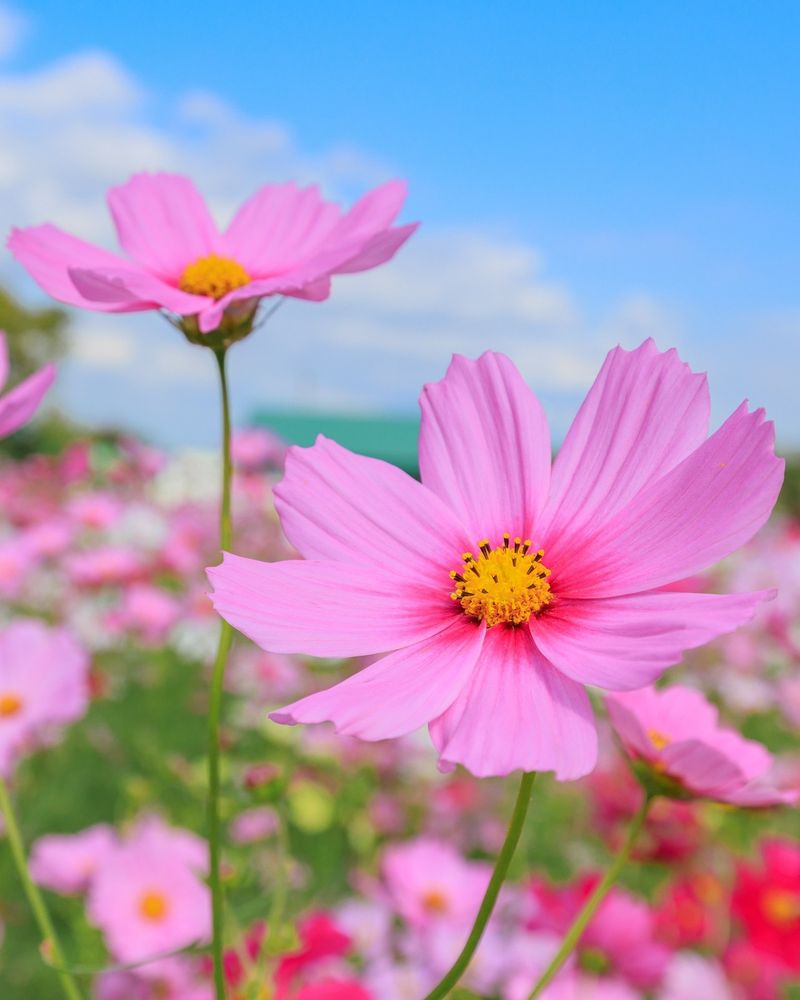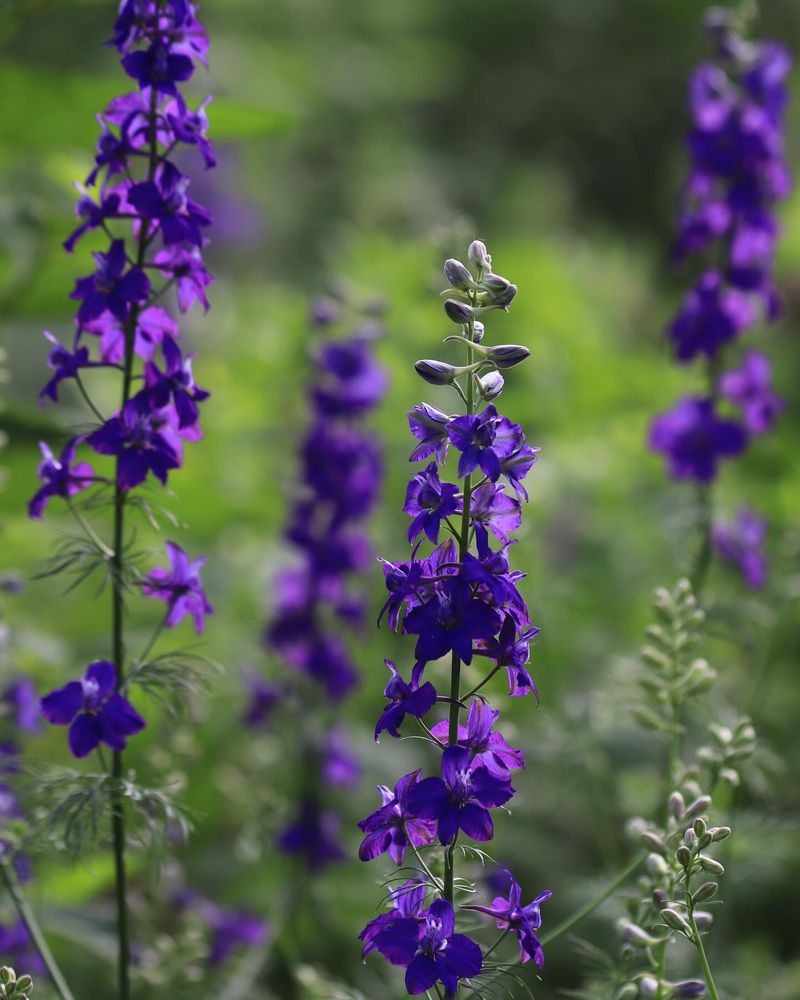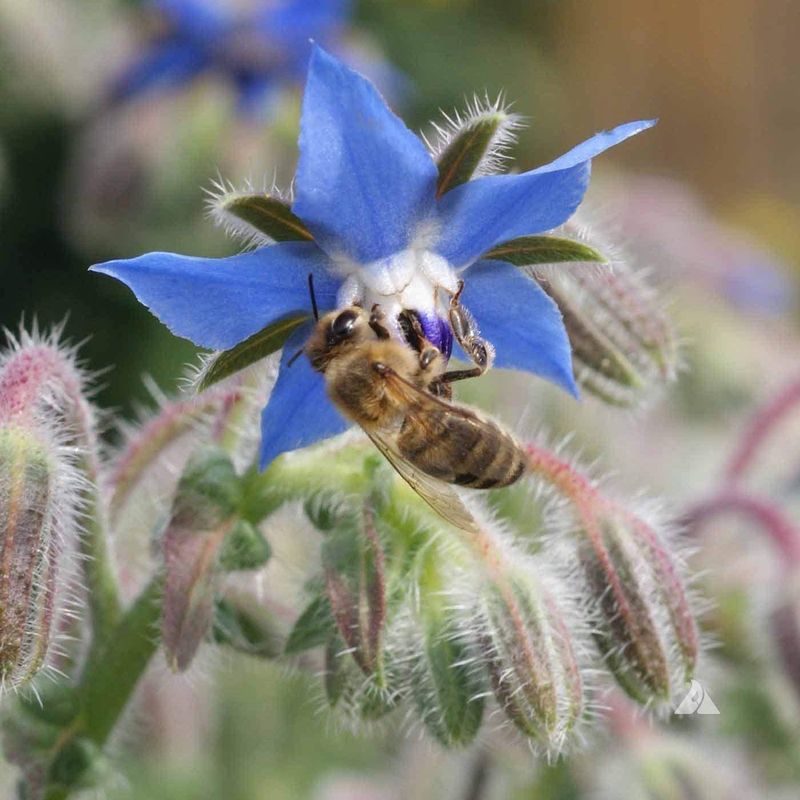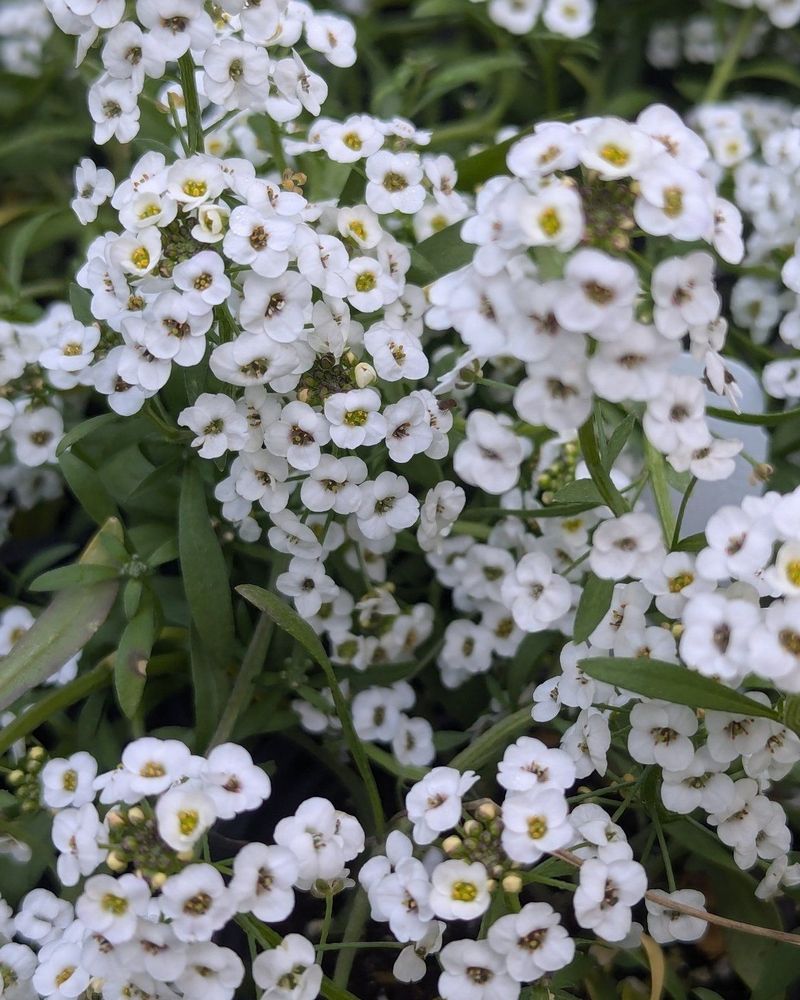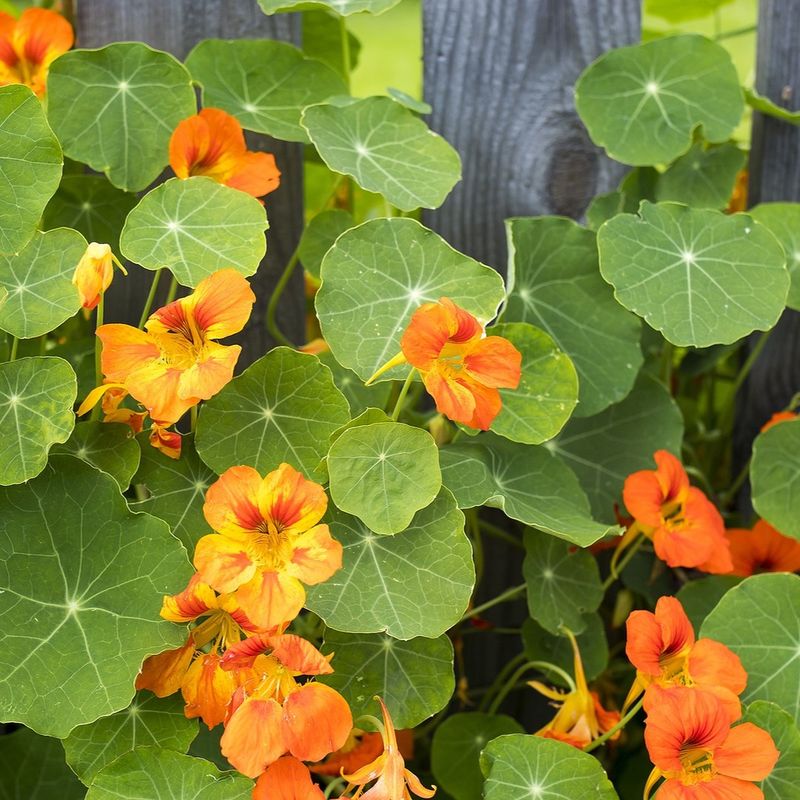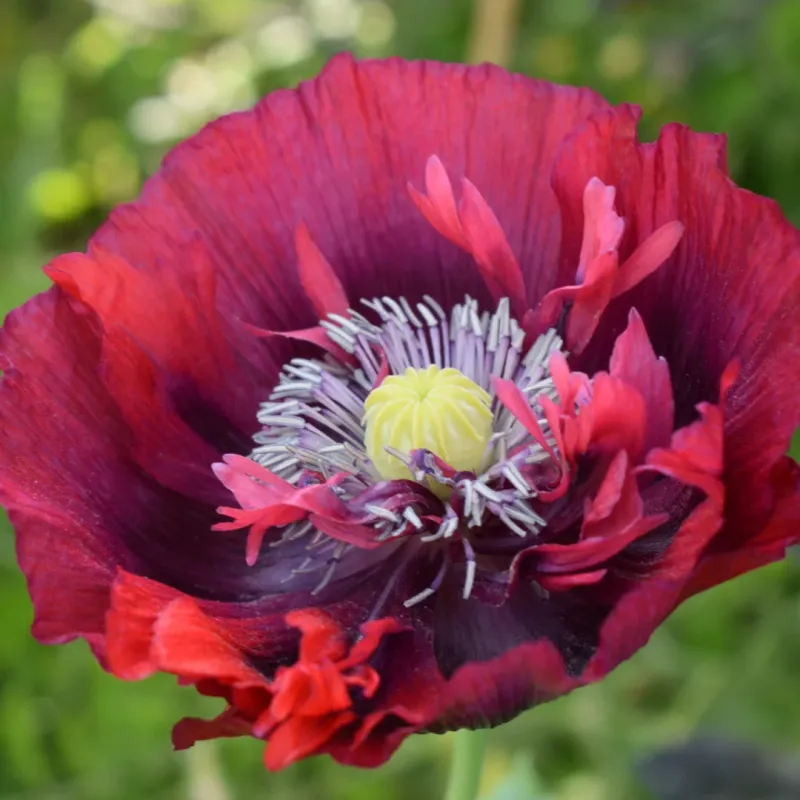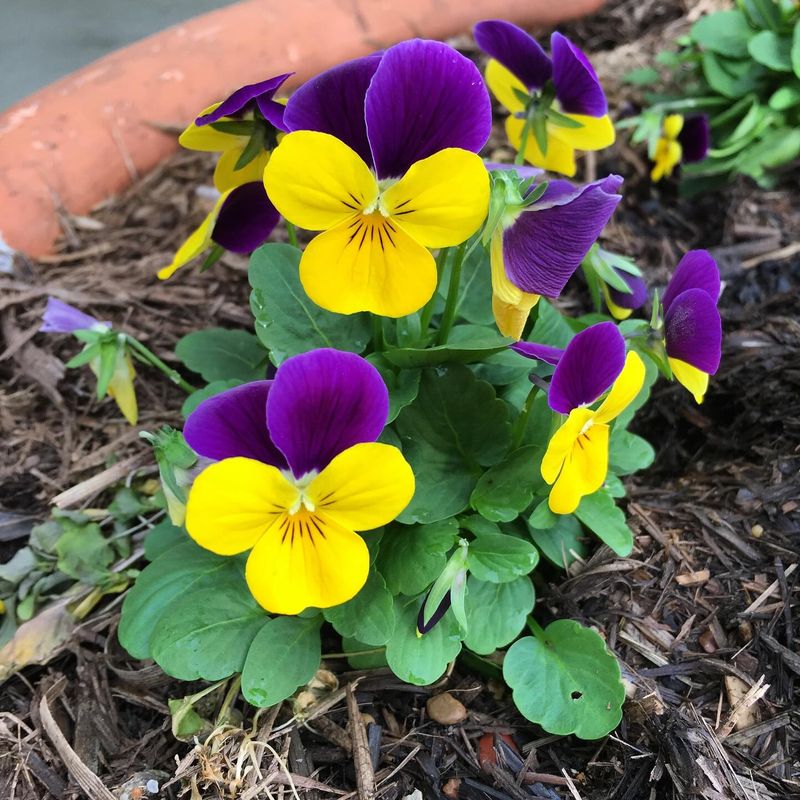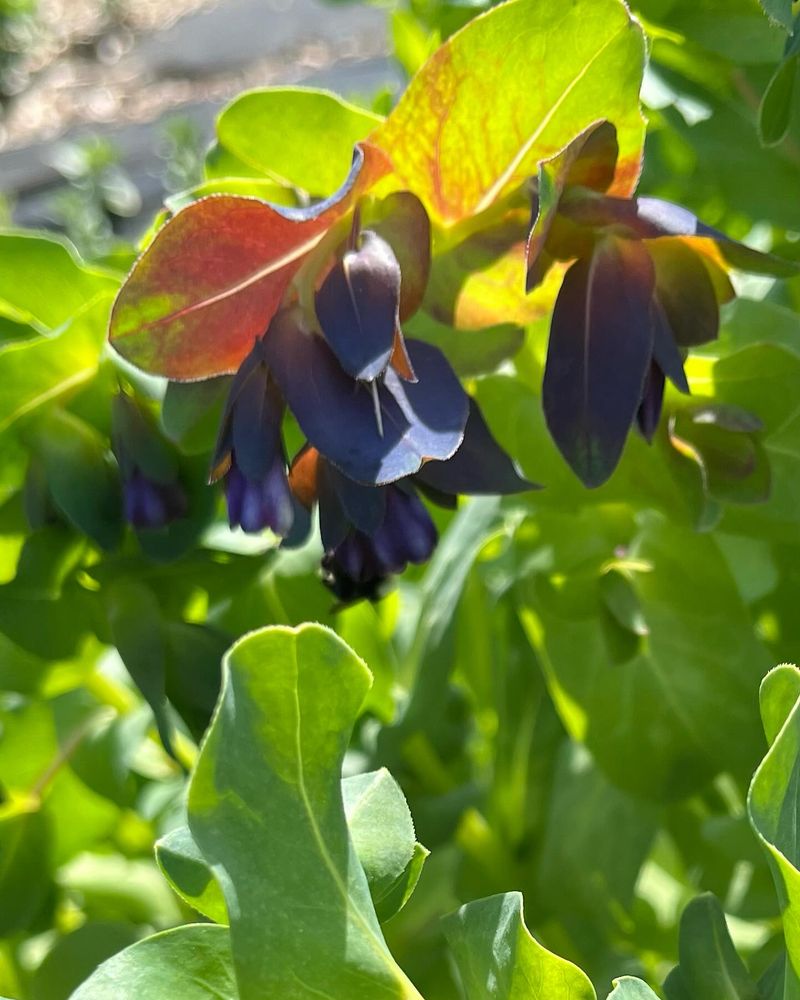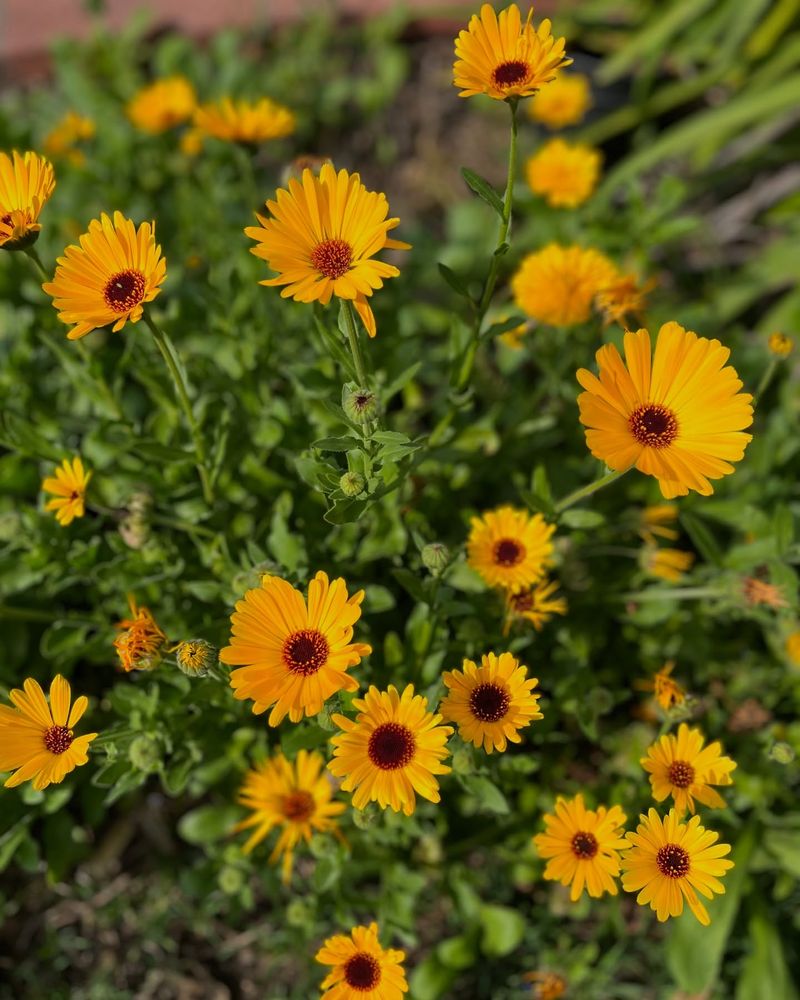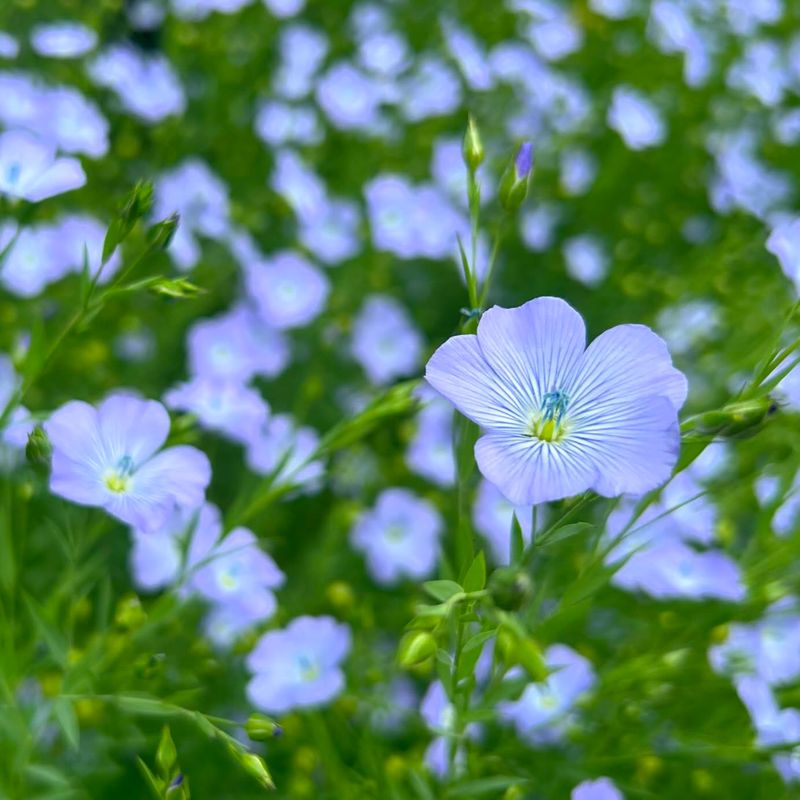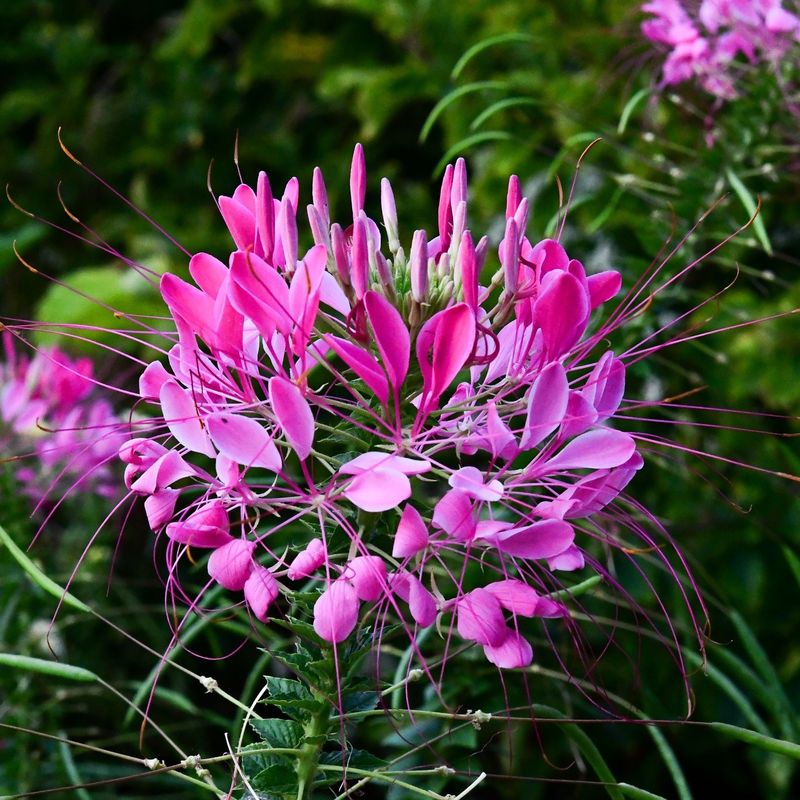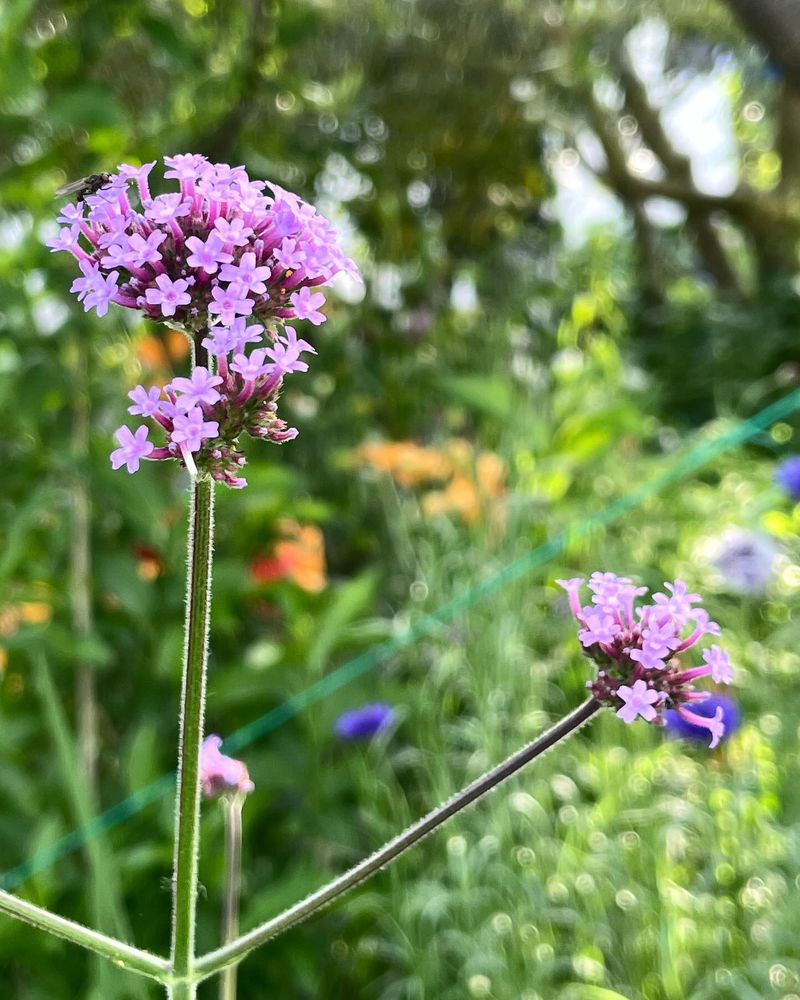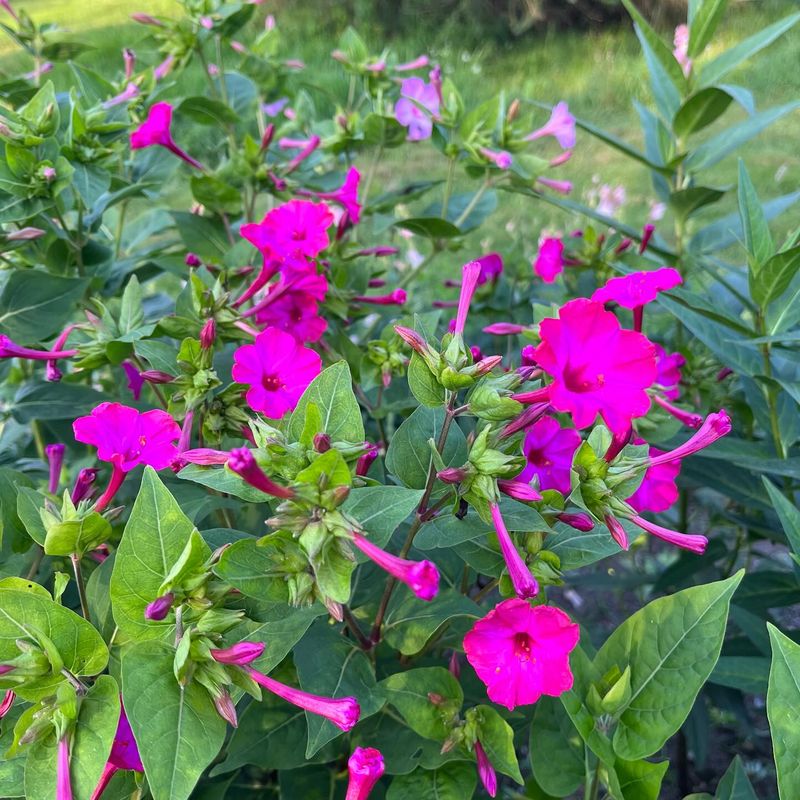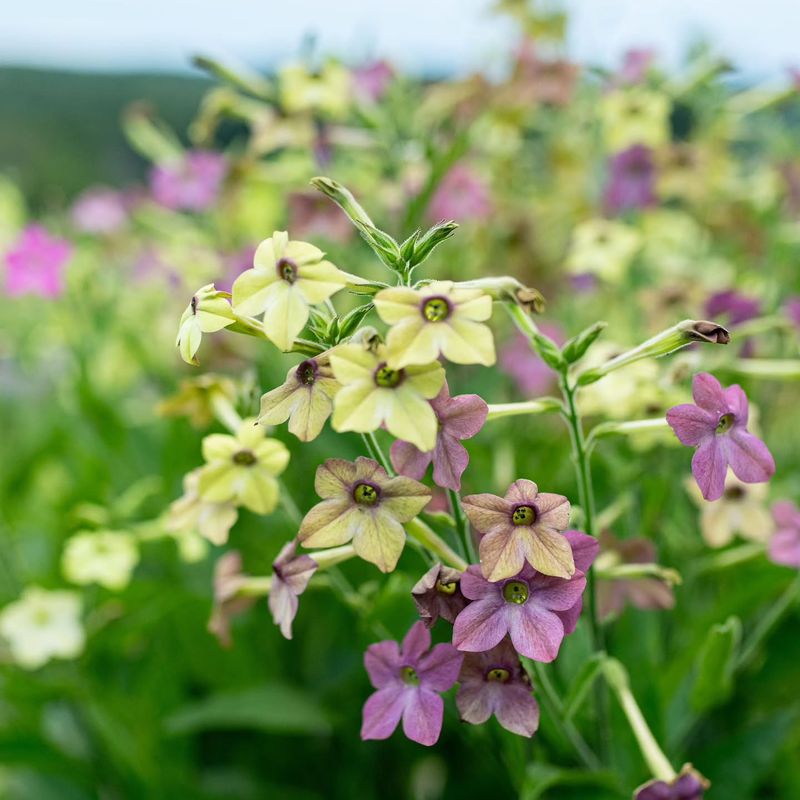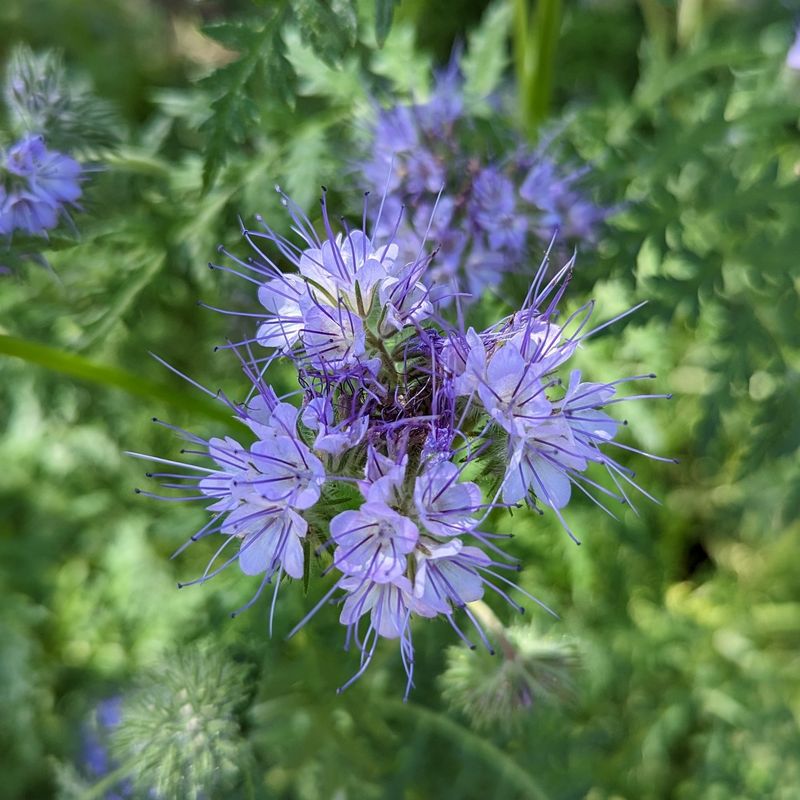Cottage gardens have that wild, effortless charm—and these annuals totally get the vibe. I’ve rounded up 20 that happily reseed themselves, so they keep coming back without much fuss.
They’re the kind of flowers that pop up like little surprises each year, filling your garden with color and character. I’ll also share a few easy ways to keep them in check so they don’t take over.
Trust me, once you grow these, you’ll wonder how your garden ever felt complete without them!
1. California Poppies
Bright orange blooms dance in the breeze, bringing a splash of sunshine to any garden corner. These drought-tolerant beauties thrive in poor soil and full sun, making them perfect for troublesome garden spots.
To manage their enthusiastic spreading, simply pull unwanted seedlings in spring and deadhead some flowers before they set seed. Leave a few seed heads intact for next year’s display while keeping their cheerful faces from taking over completely.
2. Love-in-a-Mist
Delicate blue blooms float above feathery foliage like stars in a misty sky. After flowering, interesting seed pods develop, adding architectural interest even after the petals have fallen.
Manage this whimsical plant by allowing it to set seed in desired areas, then removing spent plants before all seeds drop. The seedlings transplant easily when young, so you can relocate volunteers that appear in walkways or unwanted spots.
3. Forget-Me-Nots
Tiny blue flowers create a dreamy carpet in spring, perfect for filling gaps between perennials. Their sweet simplicity makes them a cottage garden favorite, with their sky-blue blooms bringing a touch of heaven to shady spots.
Keep these enthusiastic self-seeders in check by pulling unwanted seedlings after flowering. Forget-me-nots make excellent companions for spring bulbs, hiding the fading foliage while creating a magical woodland feel.
4. Bachelor’s Buttons
Vivid blue flowers bob on slender stems, attracting bees and butterflies throughout summer. Also known as cornflowers, these cottage classics bring a touch of wildflower meadow charm to any garden.
Manage their spread by deadheading some flowers for continuous blooms while leaving others to form seeds. Bachelor’s buttons germinate readily in cool soil, so expect early volunteers in spring that can be easily relocated or removed as needed.
5. Cosmos
Daisy-like blooms in pink, white, and magenta dance atop feathery foliage, creating an airy, romantic feel. These Mexican natives bloom from summer until frost, providing months of color and becoming butterfly magnets.
Control their spread by deadheading regularly during the season, then allowing some late blooms to set seed. For a more contained look, remove volunteer seedlings that appear in spring except in areas where you want their cheerful presence.
6. Larkspur
Spires of blue, pink, or white flowers create vertical interest in early summer gardens. These cottage garden classics resemble their perennial cousin delphinium but return reliably from seed each year with minimal effort.
Manage their growth by thinning seedlings in spring to prevent overcrowding. Larkspur prefers cool conditions, so seeds often germinate in fall or early spring, giving you plenty of time to relocate volunteers before they bloom.
7. Borage
Star-shaped blue flowers dangle above fuzzy foliage, creating a rustic charm that bees absolutely adore. This herb offers both beauty and function, with edible flowers that taste like cucumbers—perfect for garnishing summer drinks.
Control its enthusiastic nature by pulling unwanted seedlings early and removing some plants before they set seed. Borage grows quickly, so allowing just a few plants to self-sow will ensure plenty for next year’s garden.
8. Sweet Alyssum
Honey-scented tiny white flowers form frothy mounds that spill over edges and soften hard lines. The sweet fragrance attracts beneficial insects while creating a delicate lace effect around garden borders.
Manage this prolific self-seeder by trimming back plants mid-season to refresh bloom and reduce seed production. In warmer climates, sweet alyssum may bloom nearly year-round, acting almost like a perennial while continually dropping seeds for future generations.
9. Nasturtium
Round leaves and bright jewel-toned flowers in orange, yellow, and red create a cheerful display in gardens. Both flowers and leaves are edible with a peppery flavor, making them as useful in the kitchen as they are beautiful in borders.
Control their vigorous nature by collecting some of the large, easy-to-handle seeds after flowering. Nasturtiums prefer poor soil—overfertilizing results in lush leaves but fewer of the bright blooms that make them so charming.
10. Breadseed Poppies
Massive tissue-paper blooms in shades from pale pink to deep purple create dramatic early summer impact. After flowering, decorative seed pods develop, perfect for dried arrangements or collecting seeds for baking.
Manage these stately beauties by thinning seedlings in spring to about 8 inches apart for stronger stems. Breadseed poppies need light to germinate, so simply sprinkle seeds on soil surface in fall or early spring rather than burying them.
11. Johnny Jump-Ups
Cheerful little faces in purple, yellow, and white appear in early spring and continue blooming through cool weather. These diminutive relatives of pansies have a charming wildflower look that fits perfectly in cottage garden schemes.
Control their spread by pulling unwanted seedlings and deadheading some flowers. Johnny Jump-Ups often survive mild winters, blurring the line between annual and perennial while reliably self-seeding to ensure their return year after year.
12. Chamomile
Daisy-like flowers with yellow centers and white petals rise above feathery foliage, creating a meadow-like effect. The apple-scented blooms can be harvested for tea while still providing plenty of seeds for next year’s display.
Manage this prolific self-seeder by removing plants from unwanted areas and harvesting flowers regularly. German chamomile is the annual variety that self-seeds most freely, creating a cottage garden look while attracting beneficial insects to your garden.
13. Cerinthe
Blue-green waxy leaves support dangling purple-blue flowers beloved by bumblebees. Also called honeywort, this unusual plant brings architectural interest and a touch of the extraordinary to cottage gardens.
Control its spread by collecting the distinctive black seeds or removing some plants before they set seed. Cerinthe seedlings have a distinctive appearance, making them easy to identify and relocate in spring before they reach their dramatic flowering stage.
14. Calendula
Sunny orange and yellow blooms bring cheerful color from spring through fall, even in cooler climates. Also called pot marigold, these edible flowers have been used for centuries in cooking and healing salves.
Manage their enthusiastic self-seeding by deadheading some flowers while allowing others to form seeds. Calendula seedlings are easy to identify and transplant, making it simple to maintain just the right amount in your garden beds.
15. Annual Flax
Delicate blue flowers dance on wiry stems, opening in morning light and often dropping petals by afternoon. New buds open daily, creating weeks of ethereal beauty that adds a weightless quality to garden borders.
Manage their spread by allowing seeds to fall only in desired areas, removing plants elsewhere before seed formation. Annual flax grows quickly from seed, with its slender profile making it perfect for tucking between more substantial perennials.
16. Cleome
Spider-like flowers in white, pink, or purple top tall stems, creating dramatic height in summer gardens. Also called spider flower, these striking plants attract hummingbirds and butterflies while creating architectural interest.
Control their spread by deadheading some blooms and pulling unwanted seedlings in spring. Cleome seeds need light to germinate, so they’ll appear where soil has been disturbed—perfect for filling gaps but easily managed when they pop up in unwanted spots.
17. Verbena bonariensis
Tiny purple flowers cluster atop tall, nearly leafless stems, creating a floating effect above other plants. This see-through plant adds height without blocking views of plants behind it, perfect for middle or back of borders.
Manage its spreading habit by removing unwanted seedlings in spring. Verbena bonariensis often acts as a short-lived perennial in milder climates but reliably returns from seed even where winters are too harsh for the parent plants to survive.
18. Four O’Clocks
Trumpet-shaped flowers in yellow, pink, and white open in late afternoon, releasing a sweet fragrance that perfumes the evening garden. These old-fashioned favorites form tuberous roots that sometimes survive in milder climates.
Control their spread by collecting the large black seeds or digging unwanted tubers. Four o’clocks bloom from summer until frost, with each plant becoming a small shrub that creates a colorful hedge-like effect in a single season.
19. Nicotiana
Star-shaped fragrant flowers in white, pink, or lime green release their sweet scent in evening hours. Also called flowering tobacco, these elegant plants bring a touch of the exotic to cottage gardens while attracting night-pollinating moths.
Manage their spread by deadheading some flowers and removing unwanted seedlings. Nicotiana seeds are tiny, so seedlings may appear throughout the garden, but they’re easy to recognize and remove where not wanted.
20. Phacelia
Fern-like foliage supports curling clusters of lavender-blue flowers that bees find irresistible. This quick-growing annual makes an excellent green manure crop while still providing beautiful blooms and seeds for next year.
Control its vigor by removing plants after flowering in areas where you don’t want volunteers. Phacelia seeds remain viable for years in soil, so you may find pleasant surprises appearing in previously planted areas even after a year’s absence.

